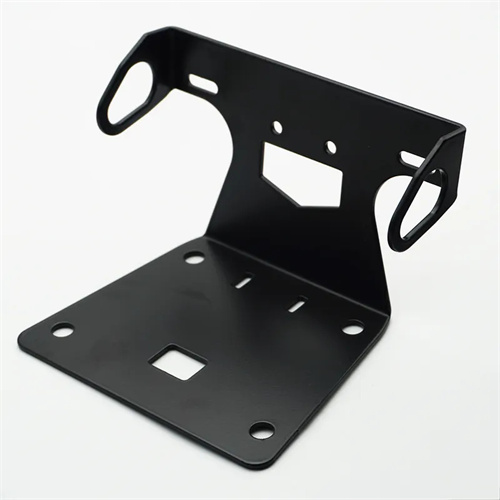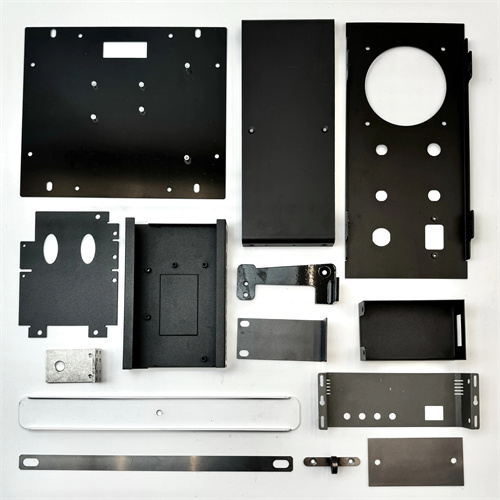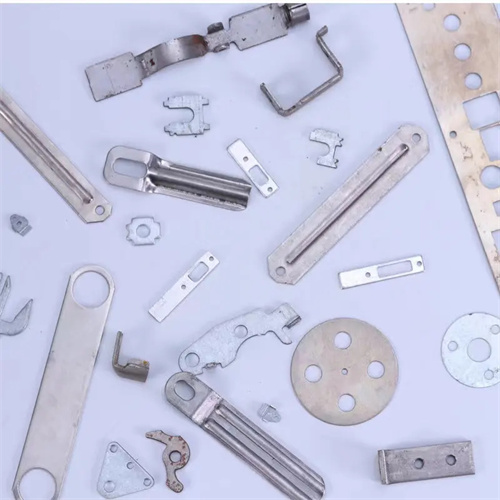Cold-formed hollow steel sections for structures
Structural cold-formed hollow steel sections are hollow sections formed from steel strips or plates through a cold-bending process. These sections are available in a variety of shapes, including square, rectangular, circular, and special-shaped. Due to their rational cross-sections, light weight, and high strength, they are widely used in steel structure construction, machinery manufacturing, transportation, and other fields, serving as a highly efficient structural material alternative to hot-rolled steel. Cross-sectional dimensions range from 50mm×50mm to 500mm×500mm for squares and 50mm×30mm to 600mm×400mm for rectangles, with wall thicknesses ranging from 2mm to 12mm. Materials commonly used include Q235B, Q355B carbon steel, and low-alloy steels. High-strength steels such as Q460 are also used in some high-end applications.

In terms of production technology, the manufacture of cold-bent hollow structural steel sections requires a series of processes, including steel strip pretreatment, cold-bending, welding (for closed sections), shaping, and heat treatment. First, hot-rolled or cold-rolled steel strip with a thickness tolerance of ≤± 0.05mm and a width accuracy of ± 0.5mm is selected. Degreasing and rust removal ensure a clean surface. Cold-bending is the core process, utilizing a multi-pass roll forming machine. 15-30 sets of rollers with different profiles are used to gradually roll the steel strip into the target cross-section. Forming speeds range from 8-20m/min, with corners using rounded transitions (radius 1.5-3 times the wall thickness) to avoid stress concentration. Closed-section steel sections require welding. High-frequency resistance welding is used for small and medium-sized sections at speeds of 20-40m/min. Internal and external burrs are removed after welding. Submerged arc welding is used for large, thick-walled sections, ensuring weld strength ≥ 90% of the parent material strength. The shaping process uses a sizing mill to adjust the dimensions, with cross-sectional tolerances ≤±1mm, diagonal deviation ≤2mm, and straightness ≤1mm/m. Finally, stress-relief annealing (600-650°C for 1-2 hours) is performed to reduce residual stresses caused by cold bending and welding, ensuring dimensional stability during use.

The performance advantages of cold-formed hollow steel sections for structural applications make them highly competitive in structural engineering. First, they offer excellent cross-sectional mechanical properties. The moment of inertia of rectangular and square sections is 20%-40% higher than that of hot-rolled steel sections of the same weight, resulting in superior bending and torsional resistance and over 15% higher material utilization. Second, they are lightweight, achieving a 70% weight reduction compared to concrete structures and a 10%-20% weight reduction compared to hot-rolled steel sections at the same load-bearing capacity, reducing foundation loads. Third, they offer high dimensional accuracy, with cross-sectional dimensional deviations of ≤1%, facilitating standardized design and assembly, making them suitable for prefabricated construction. Fourth, they offer excellent processability, amenable to cutting, drilling, and welding, increasing on-site installation efficiency by over 50% compared to concrete structures. Fifth, they offer significant cost advantages. The cold-formed process uses over 30% less energy than hot-rolled processes, resulting in product prices that are 10%-15% lower than those of hot-rolled steel sections.

In application scenarios, cold-bent hollow steel sections for structures are important materials in modern structural engineering. In steel-structured residential buildings, frame columns are made of 200mm×200mm×6mm Q355B square hollow steel sections, combined with 150mm×100mm×5mm rectangular steel beams to form a lightweight load-bearing system with seismic resistance up to 8 degrees. In mechanical manufacturing, equipment frames and columns are made of 100mm×100mm×4mm square steel sections, taking into account both strength and lightweight. In transportation, container frames are made of 80mm×80mm×3mm cold-formed steel sections to reduce their own weight and increase cargo capacity. In municipal engineering, street light poles and traffic signal poles are made of tapered cold-formed hollow steel sections with a diameter of 100-300mm, a wall thickness of 3-5mm, and a wind load resistance of 0.6kPa. In agricultural facilities, the frames of greenhouses are made of 50mm×30mm×2mm rectangular steel sections, which have a service life of more than 15 years after corrosion-resistant treatment.

Industry trends indicate that structural cold-formed hollow sections are trending toward high strength, large sizes, and multifunctionality. The use of high-strength steel (Q460, Q690) cold-formed sections increases bearing capacity by over 30% for the same cross-section, driving the development of thinner-walled sections. Breakthroughs in production technology for large-size cold-formed sections (600mm×600mm and above) meet the demands of super-high-rise buildings and long-span structures. Optimized designs for special-shaped sections (such as honeycomb sections and corrugated webs) further enhance mechanical properties and increase material utilization by another 10%. Intelligent production technology is being promoted, using BIM models to drive forming parameters, enabling digital precision manufacturing with dimensional tolerances within ±0.5mm. Green manufacturing processes are being deepened, employing full-lifecycle digital management, increasing waste recovery rates to over 95% and reducing energy consumption by 20%. In the future, with the increasing proportion of steel structures and the development of prefabricated buildings, market demand for cold-formed hollow sections will continue to grow, driving the industry’s transition toward higher efficiency and lower carbon emissions.
